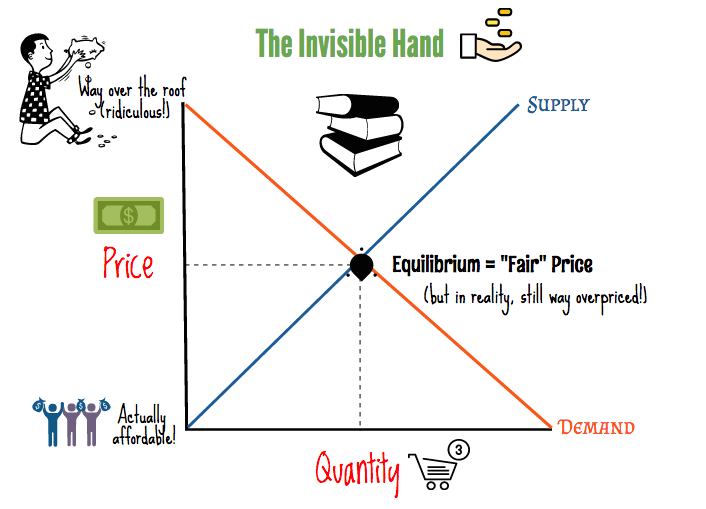

If the firm reduces the quality to increase profit, the demand for such goods will adjust to the new quality. After all, if the company doesn’t make a good or provide a service that the customer wants, it will go out of business. On the other hand, this may also encourage producers to cut corners in a bid to make more profit. Under the invisible hand, producers follow the profit motive, so there is an incentive to make production as efficient as possible. Some of the main advantages of the invisible hand include: 1. Its success is clear to see through the advancement of the global economy throughout the last century and beyond. It has brought billions of people together to work in their own interests and create goods and services for each other. The invisible hand has been in action for centuries. Supply then increases and demand falls to reach the equilibrium point. In turn this encourages suppliers to produce more.


This is because there are more consumers than it is able to produce for, so it can charge higher prices. Through the invisible hand, producers increase prices in order to capture excess consumer surplus. We then have the opposite effect whereby the price is low and there is a large amount of excess demand, which is shown as P2. In turn, the market is brought back into equilibrium as consumers flock back at the lower price – at P1. This may mean they lose some money but would have gained from the higher prices. The producers will be unable to sell all the goods at that price, so are forced to sell at a lower price otherwise make a 100 percent loss. The high prices have driven producers to oversupply the market – driven by their own self-interest to make a profit. So at point P3, the market is in a state of excess supply. These two forces push the market towards the equilibrium point in what is known as ‘the invisible hand’.Īs seen from the graph above, the invisible hand constantly pushes the market back into equilibrium. When there is an undersupply of goods, prices rise to encourage producers to increase production and supply. To explain, when there is an oversupply of goods, prices fall so that demand increases. These are forces that constantly push supply and demand back so that a socially optimal supply is reached. In his book, Smith uses the Invisible hand as a metaphor for the constant fluctuations that occur between supply and demand in order to reach equilibrium. The invisible hand itself was originally coined by Adam Smith in his book ‘The Wealth of Nations’, published in 1776. In turn, society benefits as those goods might not otherwise have been produced. In other words, by pursuing the profit motive, people must provide goods that others want, at a price they are willing to pay. The invisible hand is a term that explains how the self-interst of the individual benefits the rest of society. Send us feedback.WRITTEN BY PAUL BOYCE | Updated What is the Invisible Hand These example sentences are selected automatically from various online news sources to reflect current usage of the word 'invisible hand.' Views expressed in the examples do not represent the opinion of Merriam-Webster or its editors. 2022 Smith depended upon the process of competition to drive the invisible hand, not on individual competitors. Jessica Melugin, National Review, 18 Feb. 2022 Their decisions are less likely to produce healthy competition, beneficial innovation, and low prices than the invisible hand of the market, guided by the countless individual and voluntary decisions by consumers.

2022 The front of her throat felt tight, as though an invisible hand was clamping down on her breath. 2022 Smith depended upon the process of competition to drive the invisible hand, not on individual competitors.Īndrew Stuttaford, National Review, 4 Mar. 2022 The invisible hand may be no less naively utopian than collectivism. Robert Schlesinger, The New Republic, 22 Apr. 2022 So what in the name of Adam Smith’s invisible hand is going on here? Recent Examples on the Web No invisible hand is coming to wave our problems away.


 0 kommentar(er)
0 kommentar(er)
